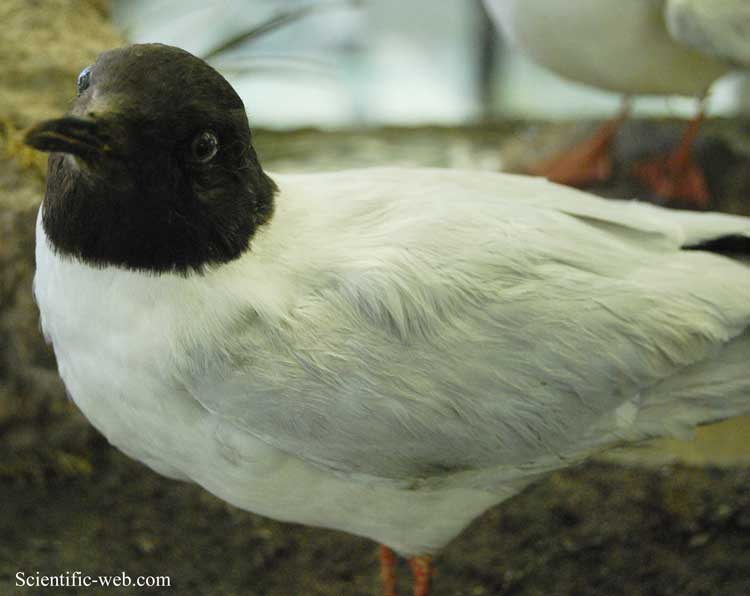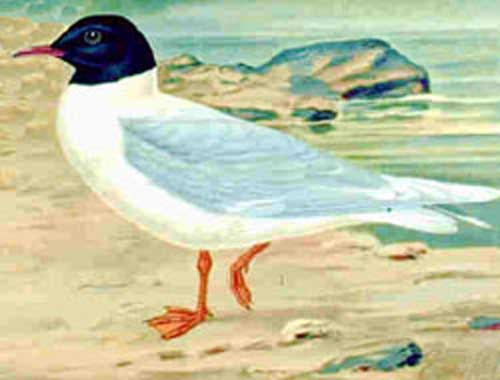
Hydrocoloeus minutus, Photo: Michael Lahanas
Superregnum: Eukaryota
Regnum: Animalia
Subregnum: Eumetazoa
Cladus: Bilateria
Cladus: Nephrozoa
Superphylum: Deuterostomia
Phylum: Chordata
Subphylum: Vertebrata
Infraphylum: Gnathostomata
Superclassis: Tetrapoda
Cladus: Reptiliomorpha
Cladus: Amniota
Classis: Reptilia
Cladus: Eureptilia
Cladus: Romeriida
Subclassis: Diapsida
Cladus: Sauria
Infraclassis: Archosauromorpha
Cladus: Crurotarsi
Divisio: Archosauria
Subsectio: Ornithodira
Subtaxon: Dinosauromorpha
Cladus: Dinosauria
Ordo: Saurischia
Cladus: Eusaurischia
Cladus: Theropoda
Cladus: Neotheropoda
Cladus: Averostra
Cladus: Tetanurae
Cladus: Avetheropoda
Cladus: Coelurosauria
Cladus: Maniraptoromorpha
Cladus: Maniraptoriformes
Cladus: Maniraptora
Cladus: Pennaraptora
Cladus: Eumaniraptora
Cladus: Avialae
Infraclassis: Aves
Cladus: Euavialae
Cladus: Avebrevicauda
Cladus: Pygostylia
Cladus: Ornithothoraces
Cladus: Euornithes
Cladus: Ornithuromorpha
Cladus: Ornithurae
Cladus: Carinatae
Parvclassis: Neornithes
Cohors: Neognathae
Ordo: Charadriiformes
Subordo: Lari
Familia: Laridae
Subfamilia: Larinae
Genus: Hydrocoloeus
Species: Hydrocoloeus minutus
Name
Hydrocoloeus minutus (Pallas, 1776)
Synonyms
Larus minutus

Hydrocoloeus minutus (*)
References
Reise durch verschiedene Provinzen des Russischen Reichs 3 p. 702
Vernacular names
العربية: النورس الصغير
asturianu: Gavilueta Nana
azərbaycanca: Kiçik qağayı
беларуская: Малая чайка
български: Малка чайка
brezhoneg: Ar gouelanig korr
català: Gavina menuda
čeština: Racek malý
Cymraeg: Gwylan fach
dansk: Dværgmåge
Deutsch: Zwergmöwe
Ελληνικά: Νανόγλαρος
English: Little Gull
Esperanto: Pigmea mevo
español: Gaviota Enana
eesti: Väikekajakas
euskara: Antxeta txiki
suomi: Pikkulokki
føroyskt: Dvørgmási
français: Mouette pygmée
Frysk: Dwergkob
Gaeilge: Sléibhín Beag
Gàidhlig: Crann fhaoileag
galego: Gaivota pequena
Gaelg: Foillan beg
עברית: שחף גמד
hrvatski: Mali Galeb
magyar: Kis sirály
հայերեն: Փոքր Որոր
íslenska: Dvergmáfur
italiano: Gabbianello
日本語: ヒメカモメ
ქართული: პატარა თოლია
қазақша: Кіші шағала
Lëtzebuergesch: Zwergméiw
lietuvių: Mažasis kiras
latviešu: Mazais ķīris
македонски: Мал галеб
монгол: Хурган цахлай / ᠬᠣᠷᠠᠭᠠᠨ ᠴᠠᠬᠣᠯᠠᠢ
Malti: Gawwija Żgħira
Nederlands: Dwergmeeuw
norsk: Dvergmåke
polski: Mewa mała
português: Gaivota-pequena
rumantsch: Muetta pitschna
română: Pescăruş mic
русский: Малая чайка
davvisámegiella: Deaggebáiski
slovenčina: Čajka malá
slovenščina: Mali galeb
shqip: Pulebardha e vogel
српски / srpski: mali galeb / Мали галеб
svenska: Dvärgmås
ไทย: นกนางนวลเล็ก
Türkçe: Küçük martı
українська: Малий мартин
中文: 小鸥
The little gull (Hydrocoloeus minutus or Larus minutus), is a small gull that breeds in northern Europe and across the Palearctic. The genus name Hydrocoloeus is from Ancient Greek hydro, "water", and koloios, a sort of web-footed bird. The specific minutus is Latin for "small".[2]
It also has small colonies in parts of southern Canada. It is migratory, wintering on coasts in western Europe, the Mediterranean and (in small numbers) the northeast United States; in recent years non-breeding birds have summered in western Europe in increasing numbers and in 2016 they successfully nested for the first time in Great Britain at the Royal Society for the Protection of Birds reserve at Loch of Strathbeg reserve in Aberdeenshire.[3] As is the case with many gulls, it has traditionally been placed in the genus Larus. It is the only member of the genus Hydrocoloeus, although it has been suggested that Ross's gull also should be included in this genus.
This species breeds colonially on freshwater marshes, making a lined nest on the ground amongst vegetation. Normally 2–6 eggs are laid.
This is the smallest gull species, with a length of 25–30 cm (10–12 in), a wingspan of 61–78 cm (24–30+1⁄2 in), and a mass of 68–162 g (2+3⁄8–5+3⁄4 oz).[4][5][6] It is pale grey in breeding plumage with a black hood, dark underwings and often a pinkish flush on the breast. In winter, the head goes white apart from a darker cap and eye-spot. The bill is thin and black and the legs dark red. The flight on rounded wings is somewhat tern-like.
Young birds have black markings on the head and upperparts, and "W" pattern across the wings. They take three years to reach maturity.
These gulls pick food off the water surface, and will also catch insects in the air like a black tern.
References
Butchart, S.; Symes, A. (2012). "Hydrocoloeus minutus". IUCN Red List of Threatened Species. 2012: e.T22694469A38866773. doi:10.2305/IUCN.UK.2012-1.RLTS.T22694469A38866773.en.
Jobling, James A (2010). The Helm Dictionary of Scientific Bird Names. London: Christopher Helm. pp. 196, 256. ISBN 978-1-4081-2501-4.
"World's smallest gull breeding in Scotland for the first time". Rare Bird Alert. Retrieved 6 August 2017.
Dunning, John B., Jr., ed. (1992). CRC Handbook of Avian Body Masses. CRC Press. ISBN 978-0-8493-4258-5.
Little gull media from ARKive
"Little gull". All About Birds. Cornell Lab of Ornithology.
Retrieved from "http://en.wikipedia.org/"
All text is available under the terms of the GNU Free Documentation License

